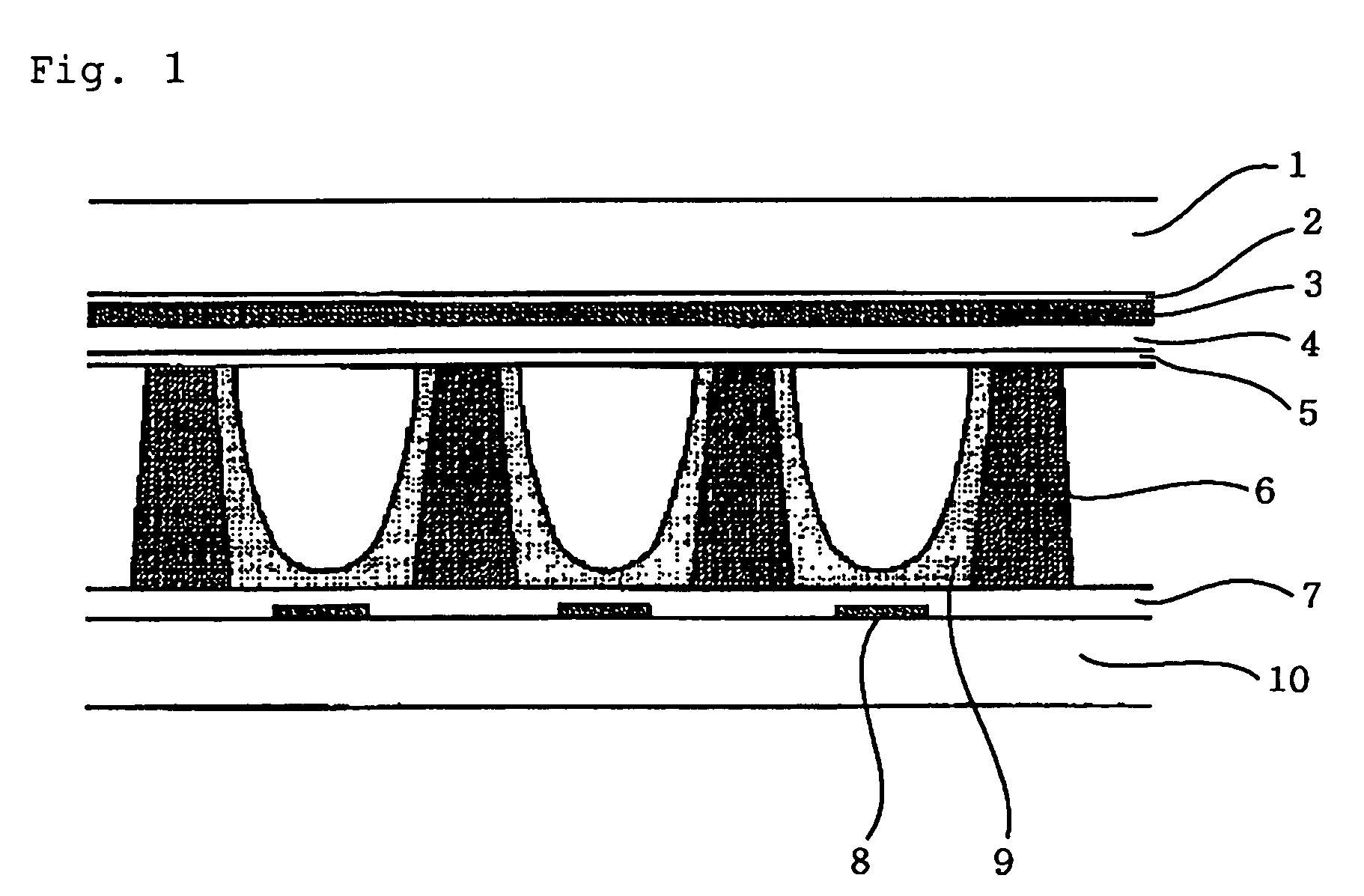Composition of silicon-containing copolymer, solvent-soluble crosslinked silicon-containing copolymer, and cured articles obtained therefrom
a technology of crosslinked silicon and copolymer, which is applied in the field of compounding of silicon-containing copolymer, solvent-soluble crosslinked silicon-containing copolymer, and cured articles obtained therefrom, can solve the problems of poor flexibility, limited use, insufficient mechanical properties, etc., and achieve excellent mechanical strength, excellent flexibility, and more thickness
- Summary
- Abstract
- Description
- Claims
- Application Information
AI Technical Summary
Benefits of technology
Problems solved by technology
Method used
Image
Examples
production example
[0108]The atmosphere of a reaction vessel placed in a thermostatic chamber was replaced by dry nitrogen, and a solution of 47 g (0.222 mol) of phenyltrichlorosilane (PhSiCl3), 56 g (0.222 mol) of diphenyldichlorosilane (Ph2SiCl2), 3.8 g (0.033 mol) of methyldichlorosilane (MeSiHCl2) and 50 g (0.19 mol) of 1,4-bis(dimethylchlorosilyl)benzene in 1000 ml of xylene was charged into the reaction vessel. Subsequently, the temperature inside the reaction vessel was set at −5° C. and, after the temperature reached the predetermined level, a solution of 13.0 g (0.7222 mol) of water (H2O) in 1000 ml of pyridine was poured into the reaction vessel at a rate of about 30 ml / min. Upon pouring the solution, reaction between halosilane and water took place, and the temperature in the vessel increased to −2° C. After completion of pouring the mixed solution of water and pyridine, stirring was continued for 1 hour. Thereafter, in order to completely react unreacted chlorosilane, ammonia was introduce...
example 1
[0112]10 g of the base polymer obtained in the above Production Example was diluted to about 40% with xylene, and tetraisocyanatesilane was added thereto in an amount of 5% by weight (0.5 g) based on the polymer, followed by stirring at a temperature of about 60° C. for 1 hour to react. The reaction solution was filtered through a 0.2-μm syringe filter, and the polymer was found to have a number-average molecular weight of 2,300 by GPC, which scarcely changed from that of the starting base polymer. Examination on bond condition by FT-IR revealed a peak near 2300 cm−1 which is not observed with the base polymer. From the wave number, this peak was considered to be a peak based on isocyanate group. Addition of isocyanate group was confirmed by this result of FT-IR.
[0113]Then, the reaction solution was coated on a silicon wafer by spin coating in a thickness of about 800 nm. Subsequently, the silicon wafer having coated thereon the reaction solution was treated in a muffle furnace in t...
examples 2 to 7
[0118]The base polymer was reacted with a cross-linking agent in the same manner as in Example 1 except for changing kind and amount of the cross-linking agent to those shown in Table 2. Also, the number-average molecular weight of each of the resultant polymers was measured in the same manner as in Example 1. The results thus obtained are shown in Table 2.
[0119]Further, the resultant reaction solutions were subjected to the same curing condition as in Example 1, and density, relative dielectric constant and solvent resistance of each of the cured coats were evaluated in the same manner as in Example 1. The results are shown in Table 3.
[0120]
TABLE 2Number-AddedAverageAmountMolecularCross-linking Agent(wt %)WeightExample 1Tetraisocyanatesilane52300Example 2Tetraisocyanatesilane102350Example 3Methyltriisocyanatesilane52250Example 4Tetramethoxysilane52260Example 5Tetramethoxysilane102300Example 6Tetramethoxysilane152350Example 7Methyltrimethoxysilane52250
[0121]
TABLE 3RelativeSolventCoa...
PUM
| Property | Measurement | Unit |
|---|---|---|
| temperature | aaaaa | aaaaa |
| heat resistance | aaaaa | aaaaa |
| heat-resistant temperature | aaaaa | aaaaa |
Abstract
Description
Claims
Application Information
 Login to View More
Login to View More - R&D
- Intellectual Property
- Life Sciences
- Materials
- Tech Scout
- Unparalleled Data Quality
- Higher Quality Content
- 60% Fewer Hallucinations
Browse by: Latest US Patents, China's latest patents, Technical Efficacy Thesaurus, Application Domain, Technology Topic, Popular Technical Reports.
© 2025 PatSnap. All rights reserved.Legal|Privacy policy|Modern Slavery Act Transparency Statement|Sitemap|About US| Contact US: help@patsnap.com



